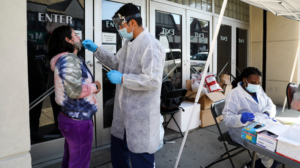
How to improve the capacity of China’s primary health care institutions to treat patients? Experts explain the hot issues of epidemic prevention
Since January 8, China has officially implemented the “Class B B Control” for the new coronavirus infection. As the Spring Festival approaches, the number of urban workers returning to their hometowns increases, and the capacity of primary health care institutions to provide medical services is widely concerned. How to improve the capacity of primary health care institutions in China and the ability to treat patients with NICU in rural areas? In response to the hot issues of public concern, Jiao Yahui, Director General of the Medical Department of the National Health and Wellness Commission, gave answers.
Q: How to improve the capacity of primary health care institutions to treat patients?
A: First, the scientific arrangement of shift rotation, temporary recruitment, the organization of secondary and tertiary hospitals to send, mutual support and other ways to stabilize and expand the primary health care institutions staff team. Develop the “Guide to Primary Care and Services for New Coronavirus Infection (First Edition)” and strengthen the training of primary medical personnel, focusing on improving the ability of early identification and early referral.
Second, establish a monitoring and dispatching mechanism to dynamically grasp the drug stockpile and use of township health centers, promptly inform and remind, and urge the strengthening of drug provision. At present, the situation of drug provision in township health centers continues to improve.
Third, strengthen the provision and use of instruments and equipment such as oxygen bags, oxygen cylinders, oxygen machines and finger pulse oxygen in primary medical and health institutions. In conjunction with relevant departments, each village health center is equipped with two free finger pulse oxygen, and a total of 1.17 million units are distributed.
Fourth, a special shift for the transfer of serious patients is established in the county, each township health center is equipped with at least one ambulance, and a non-emergency transfer fleet is formed to guarantee the transfer needs of ordinary patients.
Q: How to improve the ability to treat new crown serious illnesses in rural areas?
A: Medical and health institutions at the rural level are the first line of defense and the most important foundation for the prevention and control of epidemics and medical treatment in rural areas. We focus on “early detection, early identification, early treatment, early referral”, the main measures taken in the following areas: First, give full play to the leading role of the county hospital.
First, we give full play to the leading role of the county hospital, prepare beds, equipment, facilities and personnel, and improve the ability to treat serious illnesses.
Secondly, relying on the already formed mechanism of supporting urban and rural hospitals, all urban tertiary hospitals are zoned to establish one-to-one support relationships with county hospitals, and urban tertiary hospitals and county hospitals are required to connect to telemedicine services 24 hours a day. During special periods, such as the Chinese New Year, urban tertiary hospitals are required to send medical staff to county hospitals to be stationed there.
In addition, touring and rounds to rural areas should be increased to detect early changes in the health status of key populations, especially elderly people with underlying diseases, to ensure that they can be sent for medical treatment in a timely manner. Establish support and referral mechanisms and green channels between cities and counties to ensure that seriously ill patients in rural areas can be referred and admitted in a timely manner.


Average Rating